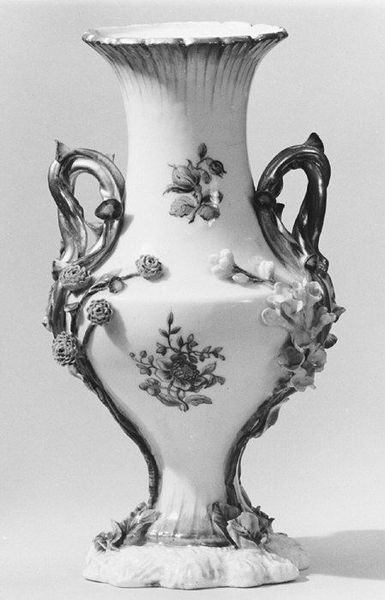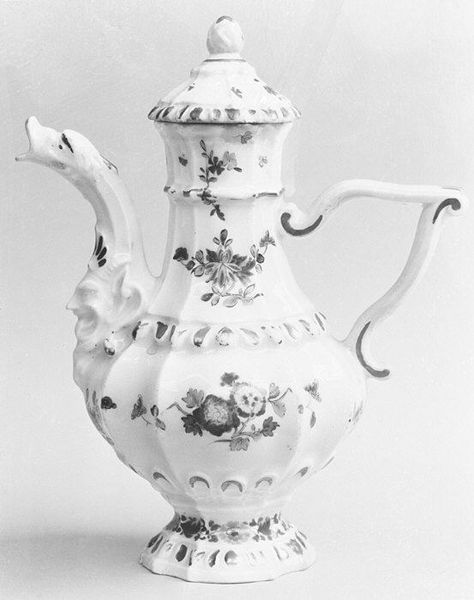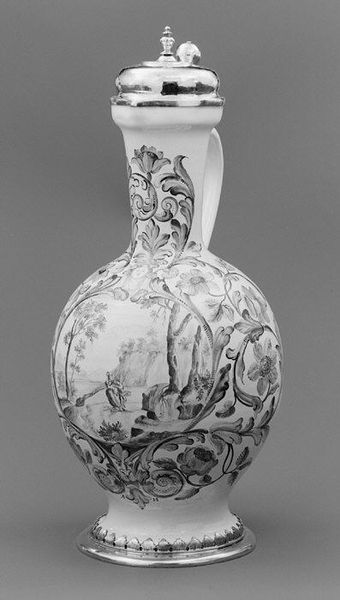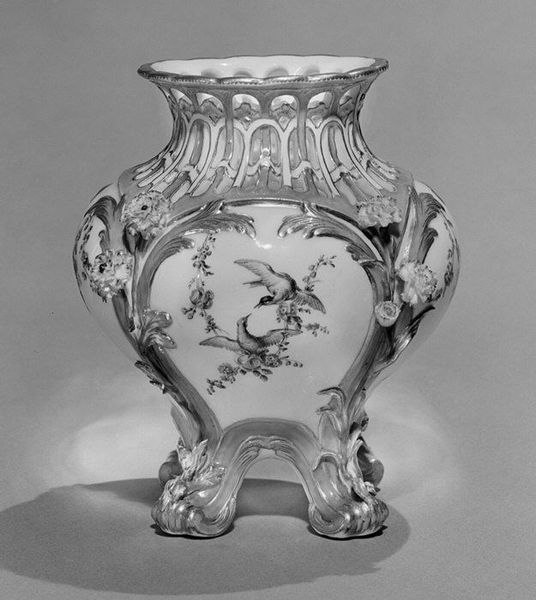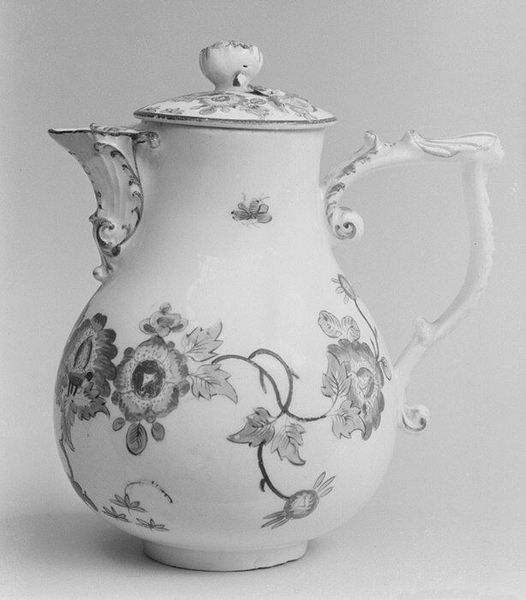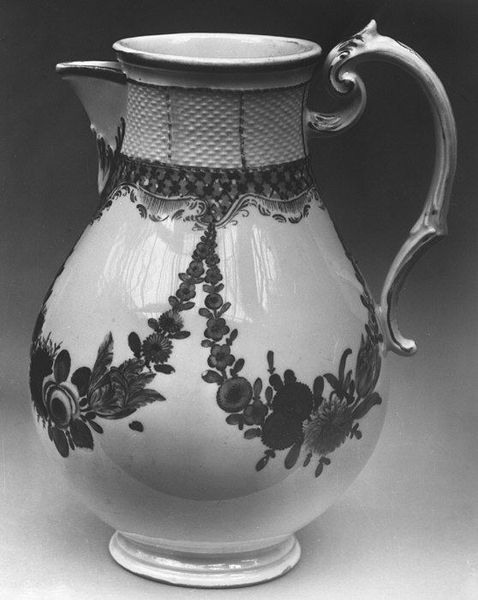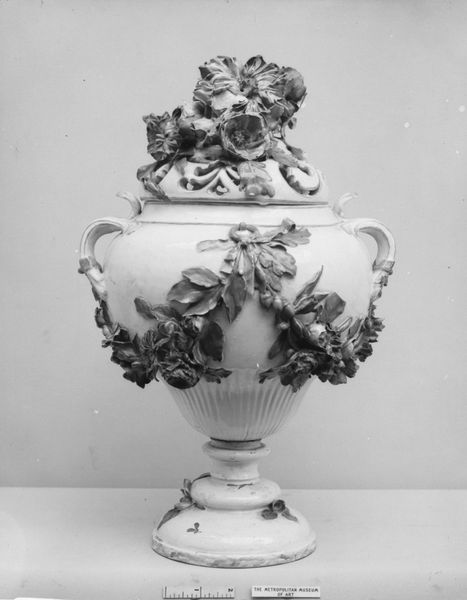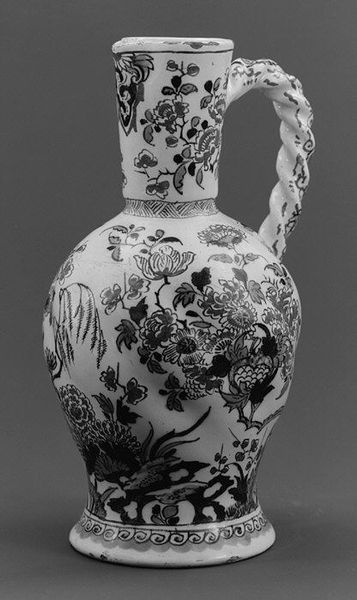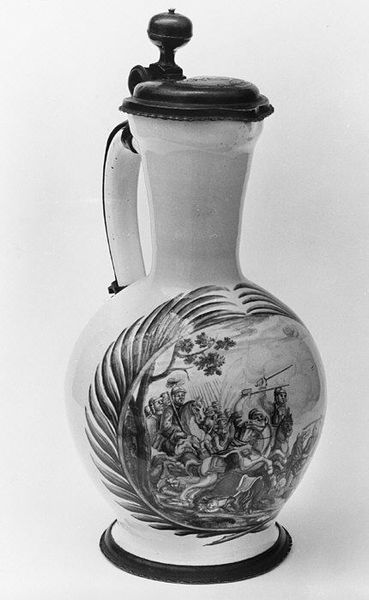
Vase (vase Duplessis) (one of a group of three) 1747 - 1757
0:00
0:00
carving, ceramic, porcelain, sculpture
#
carving
#
sculpture
#
ceramic
#
porcelain
#
sculpture
#
rococo
Dimensions: Height: 7 1/16 in. (17.9 cm)
Copyright: Public Domain
Editor: Here we have "Vase (vase Duplessis)," one of three, crafted by the Vincennes Manufactory between 1747 and 1757. It’s porcelain, embellished with ceramic carvings. The floral details are charming but what strikes me most is its clear intention to look lavish. How do you see this piece? Curator: This piece showcases the convergence of industrial production and artisanal labor in the 18th century. We see porcelain, a material achieved through complex, almost alchemical processes involving kaolin clay and high-temperature firing. The addition of applied ceramic carvings further complicates the labor and materiality; it’s not simply molded but embellished, pushing it towards luxury. How do the handles function practically versus their elaborate adornment? Editor: That’s a good point. I suppose they’re primarily decorative rather than functional. Curator: Exactly! Consider also the social context. Pieces like this were commodities produced in manufactories that depended upon skilled labor to satisfy elite consumers' demand for refined ornamentation. What kind of skills do you imagine were needed for these porcelain sculptures, compared to the painting? Editor: I see, the sculptural elements would’ve needed a different skillset, more akin to working with clay perhaps? This blurs the lines between different forms of artistry. It feels less ‘mass produced’ when you consider that. Curator: Precisely. The Duplessis vase transcends simple function to become a demonstration of skilled making and a reflection of the era’s burgeoning consumer culture. Hopefully, this analysis helps one think about what they see! Editor: It really does. I hadn’t thought about it as commenting on both labor and wealth. Thanks for expanding my view.
Comments
No comments
Be the first to comment and join the conversation on the ultimate creative platform.
